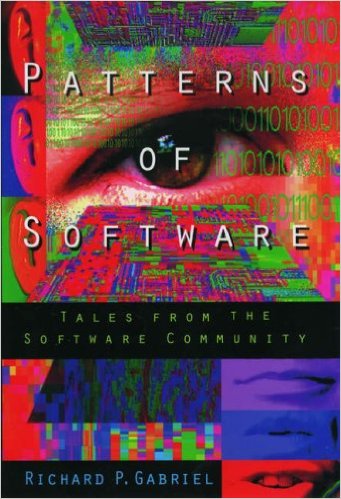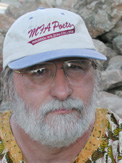
Patterns of Software: Tales from the Software Community
Provides an informative inside look at the world of software design and computer programming and the business that surrounds them.
Publication date: 28 May 1998
ISBN-10: 0195121236
ISBN-13: 978019512123
Paperback: 256 pages
Views: 17,619
Type: Book
Publisher: Oxford University Press
License: Creative Commons Attribution-NonCommercial-ShareAlike 3.0 United States
Post time: 24 Apr 2008 12:05:42
Patterns of Software: Tales from the Software Community
 Provides an informative inside look at the world of software design and computer programming and the business that surrounds them.
Provides an informative inside look at the world of software design and computer programming and the business that surrounds them.
Publication date: 28 May 1998
ISBN-10: 0195121236
ISBN-13: 978019512123
Paperback: 256 pages
Views: 17,619
Document Type: Book
Publisher: Oxford University Press
License: Creative Commons Attribution-NonCommercial-ShareAlike 3.0 United States
Post time: 24 Apr 2008 12:05:42
Share — copy and redistribute the material in any medium or format
Adapt — remix, transform, and build upon the material
The licensor cannot revoke these freedoms as long as you follow the license terms.
Click here to read the full license.
In our homes, our schools, and our businesses, computers play an ever-increasing role. But while most of us today can work a computer--albeit with the help of the ever-present computer software manual--we know little about what goes on inside the box and virtually nothing about software design or the world of computer programming.
In Patterns of Software, the respected software pioneer and computer scientist, Richard Gabriel, gives us an informative inside look at the world of software design and computer programming and the business that surrounds them. In this wide-ranging volume, Gabriel discusses such topics as what makes a successful programming language, how the rest of the world looks at and responds to the work of computer scientists, how he first became involved in computer programming and software development, what makes a successful software business, and why his own company, Lucid, failed in 1994, ten years after its inception.
Perhaps the most interesting and enlightening section of the book is Gabriel's detailed look at what he believes are the lessons that can be learned from architect Christopher Alexander, whose books--including the seminal A Pattern Language--have had a profound influence on the computer programming community. Gabriel illuminates some of Alexander's key insights--"the quality without a name," pattern languages, habitability, piecemeal growth--and reveals how these influential architectural ideas apply equally well to the construction of a computer program. Gabriel explains the concept of habitability, for example, by comparing a program to a New England farmhouse and the surrounding structures which slowly grow and are modified according to the needs and desires of the people who live and work on the farm. "Programs live and grow, and their inhabitants--the programmers--need to work with that program the way the farmer works with the homestead."
Although computer scientists and software entrepreneurs will get much out of this book, the essays are accessible to everyone and will intrigue anyone curious about Silicon Valley, computer programming, or the world of high technology.
Reviews:
Amazon.com
:| "This is a philosophical book, intended for experienced software developers - nearly all of whom have been language designers, at least in small, at one time or another. The technical density tends towards the low, though, and it's really not for beginners."
:) "This book is one of the best personal commentaries written about the Computer industry as a business and culture that consists of people."
Tweet
About The Author(s)
Dr. Gabriel contributed to the development of Lisp and other infrastructure used by the artificial intelligence community. His contributions to the definition of the Common Lisp Object System set the stage for many object-oriented language features that were ahead of their time. He helped to develop Smalltalk and other infrastructure used by the object-oriented programming community, and has been influential in the ACM OOPSLA conferences, for which he created the Onward! Track to look for the next big advance in object technology.

Dr. Gabriel contributed to the development of Lisp and other infrastructure used by the artificial intelligence community. His contributions to the definition of the Common Lisp Object System set the stage for many object-oriented language features that were ahead of their time. He helped to develop Smalltalk and other infrastructure used by the object-oriented programming community, and has been influential in the ACM OOPSLA conferences, for which he created the Onward! Track to look for the next big advance in object technology.